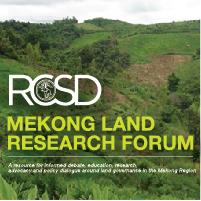Resource information
Environment and poverty nexus is still a polemical issue. Some schools of thought claim that it is poverty that has the major effect on the environment, while another perspective suggests that the environment has more impact on the poor than vice-versa because the poor have no power to exploit the environment. In the context of Cambodia, there is a general consensus that the poor, particularly those living in rural areas, are heavily dependent on the environment i.e. common property resources. If the environment is degraded, the livelihoods of those people will definitely be severely affected. This paper aims to address the impact of environmental degradation on poverty in Cambodia. We use the Cambodia Socio-economic Survey in 2007 (CSES 2007) and other available secondary data to examine the impact of environmental income (forestry and hunting) and that of environmental variables such as flood, drought, and land erosion on poverty. Following Cavendish (1999), we use a simple descriptive method to assess the former hypothesis. To take other factors into account, probit regression method is adopted to investigate the latter. The study also attempts to examine household risk coping strategies and limitations in response to environmental change, as well as the government’s mitigation and coping strategies. The results show that poverty rate will increase by an average of 16.3 percent if rural households are unable to access forestry and hunting at all, of which the headcount ratio in Tonle Sap (wetland) is likely to edge up by 14.1 percent. Drought is likely to increase the poverty rate by 6 percent, while flood decreases it by 4 percent. The unexpected result for the case of flood is largely because it is commonly viewed as a source of profit rather than a source of disaster as it usually contributes to the wealth of biodiversity, abundance of fish and soil fertility in Cambodia (MRC 2006). Meanwhile, we also find that a 1 percent increase in land erosion (land productivity as proxy) raises the poverty rate by 3 percent.


